
20 years of the domestic launch in Europe of a franchise that, despite having a long season almost gone, is still enjoyed as the first day. It's time to make crazy money, are you ready?
Yehee, come on over and have some fun with Craaazy Taxi! It's radical! Let’s have some fun! To those who have enjoyed the iconic first installment of this franchise, this phrase will surely come to mind quickly that hoarse and a bit of a bad voice that encouraged us to play a game and that so well married the music and aesthetic thug of Crazy Taxi.
It is just an example of the attention to detail that has been the brand of the house of this saga. That ability to transform a seemingly simplistic concept (a taxi with which you pick up customers that you must take to their destination) into an experience that even today, when they turn 20 years later, continues to engage as the first day.
From the fluidity and the sensation of speed and vertigo that the cities of the game transmit, full of avenues full of traffic and slopes and ramps, to the well-controlled control (easy to get hold of it but with a lot of depth), going through the band of course Sound, one of its hallmarks, Crazy Taxi leaves no detail loose to make the experience as round as possible. His million copies in Dreamcast, which was Sega's first major sales success for the machine, attests that the public accompanied this unorthodox proposal.
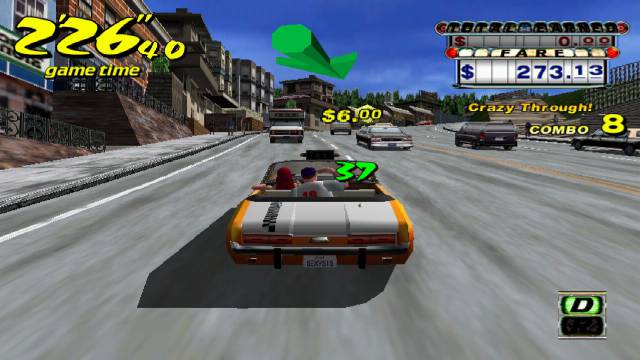
The origin
But where did the idea come from and how did it materialize so round? The original idea is from the producer and then responsible for Hitmaker, Kenji Kanno, and as he confessed in an interview in 2014, he was caught in a traffic jam. While he waited inside his vehicle, the opposite lane was clear. A fact that inspired him how fun it would be to skip the traffic rules and be able to simply drive counter direction.
It really wasn't the first Sega arcade title on the line of reaching random checkpoints in an open world city. That formula had already been executed two years earlier by Harley-Davidson & L.A. Riders, although in a much less refined formula.
Focusing more on the game itself, in 2000, with the release still relatively recent, Kanno explained that Crazy Taxi was based on the philosophy of the arcades of the time, games to capture attention and make the player want to play them from The first look. Of course, the Hitmaker game presented an extra virtue over other contemporary arcades: in Crazy Taxi, if you were skilled enough, your game could last a considerable time.
Not only that, but there is also a clear sense of progression in the initial arcade city, which as veterans of the title will know, results in a perfect loop if we manage to reach the end. A feature that prevented the player from “getting lost” and that was precisely one of the reasons that inspired the “original” map that was included in the domestic conversion. This offered many more alternative roads and the possibility that we were wrong on the street, in addition to using the slopes masterfully to break the linearity of other driving games and turn each trip into a frantic experience.
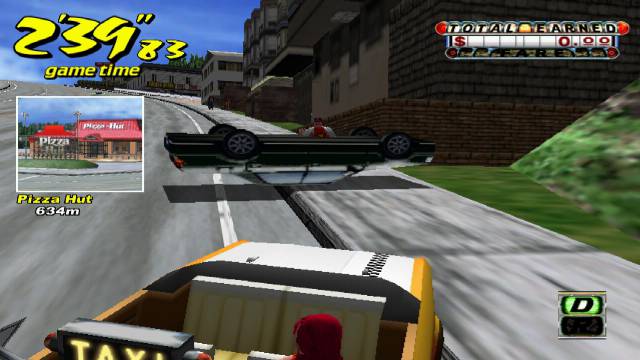
What made him unique
Crazy Taxi was also a pioneer in bringing real brands to video games, being able to take our passengers to well-known real stores. A detail that far from being anecdotal helped to enhance the atmosphere and realism of the game.
But if there is a remembered element of Crazy Taxi, even to the extent that its modification or absence subtracted from the experience, it is music. And it is no coincidence, as Kanno confesses, the game was built on its soundtrack, being selected at an early stage of development.

Another detail of the conversion of arcade to a domestic game was the inclusion of the Crazy Box, a series of challenges that actually served as a tutorial to master driving mechanics, which, as we said before, are much deeper and more complex than we His apparent simplicity could make one think.
Crazy Taxi was a resounding success in arcade, and even greater in its domestic version. Not only managed to exceed one million copies in a first Dreamcast with a small base installed, but later managed to add another two and a half on PS2.
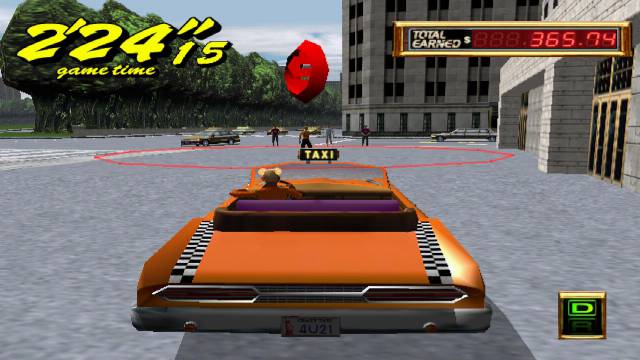
We're back, it's Crazy taxi 2!
Success led to an inevitable consequence: an early sequel, which nevertheless came almost at the end of Dreamcast's short life. Apparently continuous, it actually offered several interesting turns in the gameplay.
The most important and criticized was the inclusion of the crazy jump, the possibility of making our car jump through the air with the press of a button. This allowed overcoming obstacles to reach destinations on time and create unlikely shortcuts. In return, the new location, a New York version, lost the verticality of the first delivery, and increased traffic density. Group passengers were also introduced. A much greater challenge but that in return provided a great reward. All this with a new selection of taxi drivers who were not lagging behind the bizarre distribution of the first delivery.
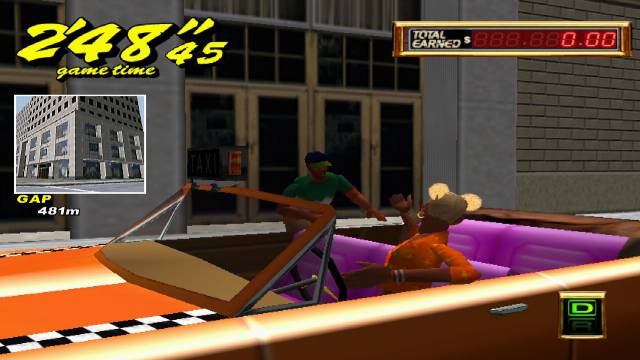
He returned, of course, the cane soundtrack and frenetism that had become a sign of identity of the saga, and also the same graphic engine with hardly any improvements, although everything was still moving to the fluid 60 fps identity sign of the saga. And the Crazy Box returned, transformed this time into the Crazy Piramid.
The reception of the criticism was again very positive despite some criticisms of continuity, and became another of Dreamcast's mythical titles, which however did not live long enough to receive more installments of the franchise, despite the fact that the third Delivery did not take too long.
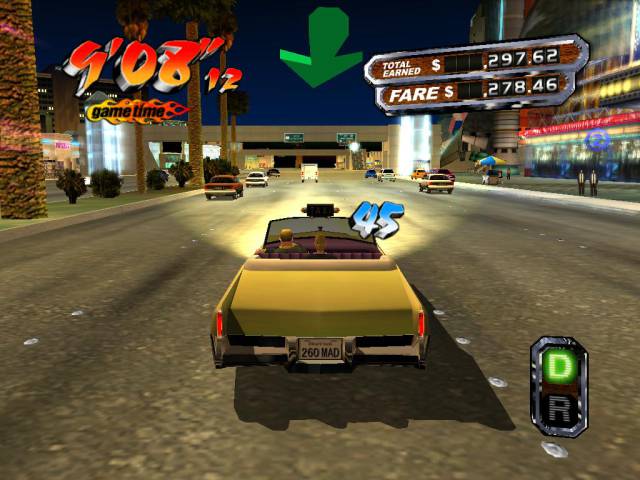
Time to try your luck, Crazy Taxi 3!
Crazy Taxi 3 arrived just a year after Crazy Taxi 2, in 2002, and did so exclusively to the first Xbox, although it had a subsequent conversion to PC. Again a new city was added, in this case Las Vegas, and at the same time the previous two, New York and San Francisco, were compiled. The change in the latter, which received the addition of the groups and the Crazy Jump, not present in the first installment, was especially notable. The Small Apple, meanwhile, was shown at night and with some changes. And of course after the Crazy Box and the Crazy Piramid, it was the turn of the Crazy X, in honor of the console on which it ran.
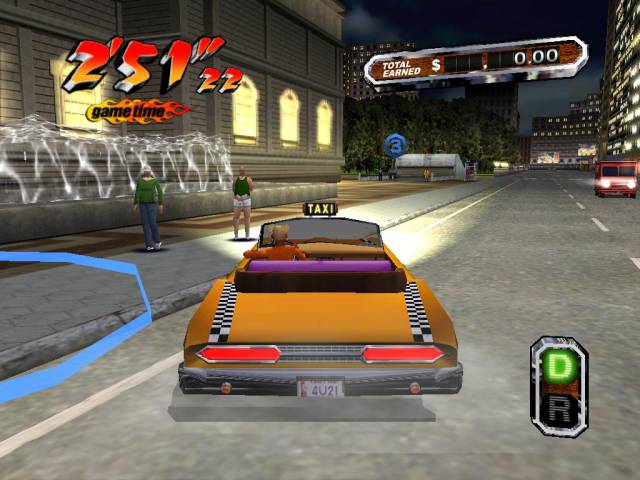
Of course, the lack of news and the fact that the new map was somewhat bland compared to the previous ones made this delivery the worst reception until then. It did not help a new soundtrack that dispensed with the tone of the previous games to get closer to a more pop / dance style. Of course, this delivery meant the return of the franchise to the arcades, with a conversion for the Chihiro board, similar in its architecture to the Xbox itself.
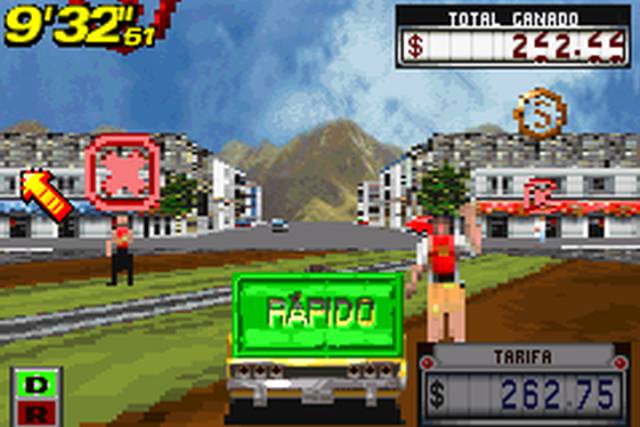
The road to the portable market: Catch a Ride and Fare Wars
From that point on, the saga, like Sega itself, fell into a period of reconversion after its sudden abandonment of the console market and the Crazy Taxi franchise ended up licensed to THQ that decided to adapt it to the laptop of the moment, the Game Boy Advance
The result was a fairly faithful port, especially for the hardware on which it moved, which maintained the essence of the franchise but lost in return key elements such as music quality or control. But above all, because of the Crazy Taxi graphics: Catch a Ride lost his frenetismo and rhythm. This conversion, despite including two cities and the Crazy Box mode with the possibility of playing with all the taxi drivers in the franchise, was generally beaten by critics.
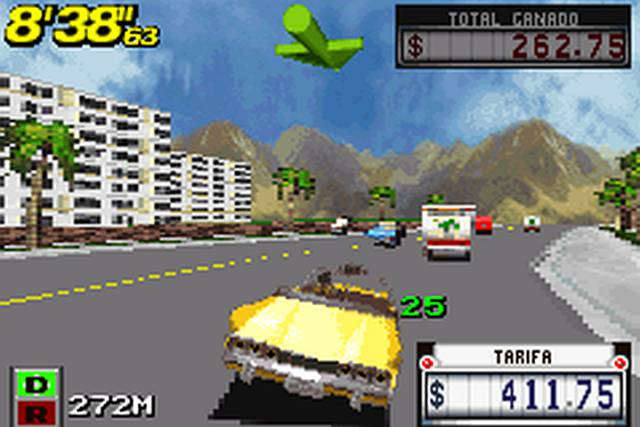
Something improved things in the next conversion to another laptop, in this case PSP, which arrived in 2007. Crazy taxi: Fare Wars, developed by Sniper Studios and Black Hole Entertaiment, literally allowed us to choose between the first and second Crazy Taxi , ported to the system quite faithfully but losing all the music and licensed establishments along the way.
But the highlight of this installment for PSP is that, for the first time in the franchise, the game had multiplayer, both through the connection between 2 PSPs and in turns in the same console. In this way, we could compete with an acquaintance to see who was faster taking the same customer from the same point to their destination.
Of course, take the Dreamcast games to PSP as it did not give the best possible result, and with excessive pop in and sometimes quite poor framerate, especially in the locations of the second installment, the game is not enough to provide fun that characterized the originals.
Ports, ports, ports …
While the original game continued to be relaunched in more and more systems, originally licensed by Acclaim and later at the hands of Sega itself. In total the game has been released, apart from Dreamcast and arcade, on PS2, Gamecube, Playstation 3, Xbox 360, iOS and Android.

Many of these versions, as happened with Fare Wars, lack the original music, which was replaced by lesser-known bands in a movement that caused the rejection of some fans.
This has been surprisingly corrected in the version for smart devices, however. As part of the Sega Forever line, the game can be played for free with ads, or pay three euros for it. This version also recovers the original music that was amputated from the versions for domestic consoles. In addition the controls are well adapted for a touch screen, so it is quite recommended for those who have nostalgia and want to spend a few crazy minutes.
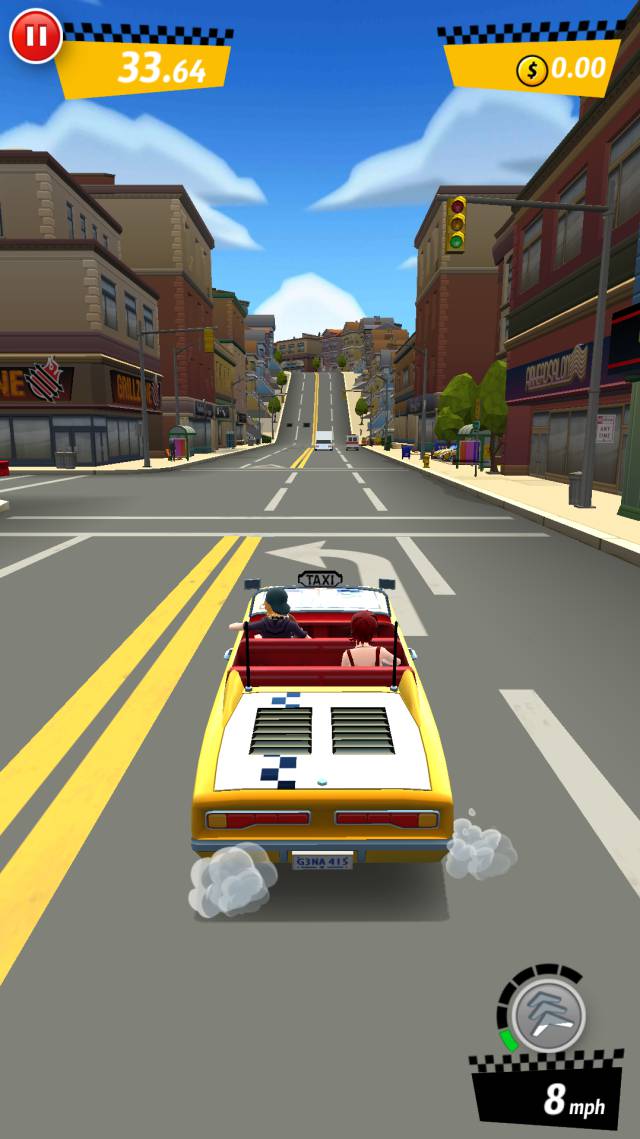
Aftermath in the palm of your hand
But that port is not the only foray of Crazy Taxi on Android and iOS, but it seems that Sega has found in that market the niche for the franchise. Thus, the only “official” sequel supervised by Kanno himself has been Crazy Taxi City Rush.
It is a game very different from the rest of the deliveries, both for its control, where we use our finger to change lanes, turn corners and brake at the destination; as for offering a certain story, and a progression. Aesthetics and music have also evolved into a more cartoon style.
However, the experience is quite fun and in fact the game has had a great reception, and currently, almost five years after its launch, it has exceeded one million downloads and has a rating of 4.4 stars out of 5 on Google Play .
Another very original spin off for mobiles is Crazy Taxi Idle Tycoon, a game that puts us in the shoes of a taxi company fighting for its future in the complicated world of transport where a gray company is monopolizing the sector and ripping off drivers staying With the money that corresponds to them, so we have to get to work to recover the city. Like City Rush it is a free game with advertising and here all the gameplay focuses on the management of the company, seeking to maximize the benefit that our taxi company generates.

Impersonators
Until there would be everything out of Sega's hand, but Crazy Taxi has had the honor of becoming a game capable of inspiring dozens and dozens of imitations. Since the launch of The Simpsons: Road Rage (2001), it ended in a plagiarism lawsuit that ended up being extrajudicially resolved.
And before that several PC games, such as Super Taxi Driver or Taxi Racer, cheap productions that tried to copy the concept without understanding what it was that made it fun. Horrible graphics and playability were the tonic of these market clones. But these copies were not left alone on the PC. PS2, Xbox, Wii and PC received for example the infamous London Taxi: Rushour.
Currently these types of clones have flooded the stores of iOS and Android with hundreds of quality games more than debatable in many cases and with names as little original as Crazy Taxi Driving Simulator, Taxi Driver: Crazy Taxi Game or Extreme City Crazy Taxi. In some of these titles we even find old acquaintances of other videogames that do not look like they have received permission from their creators to make these cameos …
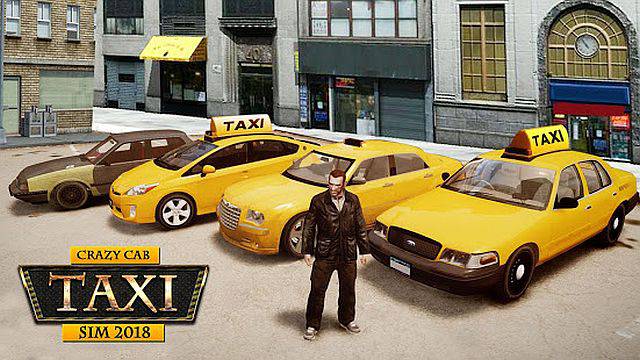
The influence of that arcade at the end of the century has been able to crown it, with just three canonical deliveries, as one of the most iconic and recognizable franchises in the world of video games. But after years and years of ports and spin off on mobile, will there ever be a Crazy Taxi 4? Only time will tell.

